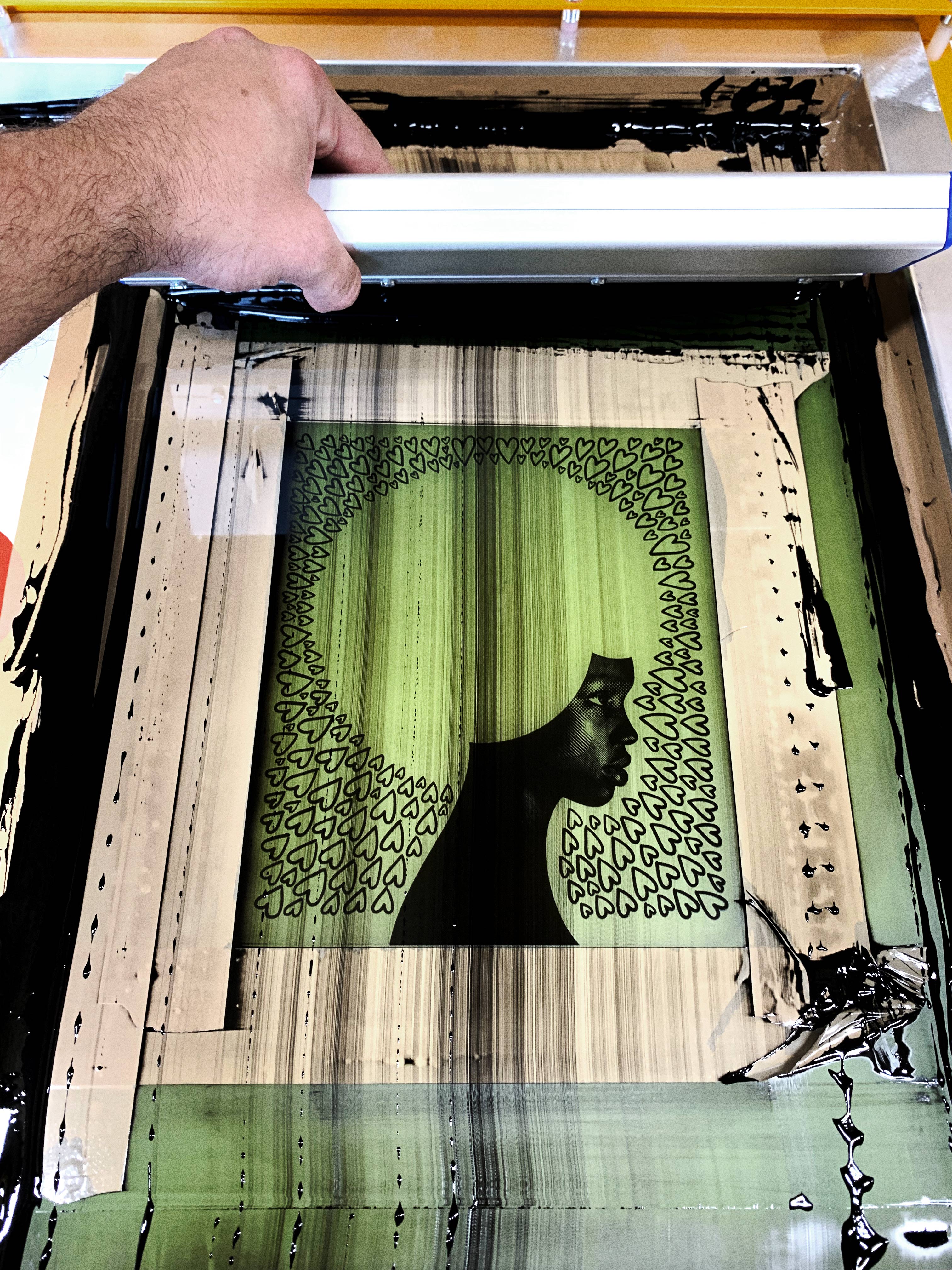ChatGPT said: Finding the best deals with 10:9 Design near me: strategies
The Vital Overview to Understanding Screen Printing and Its Versatile Utilizes
Screen printing has an abundant background that dates back to old times, advancing right into a sophisticated strategy used across various sectors today. This guide explores the details of the screen printing process, describing its applications in fashion, home, and advertising style - 10:9 Design Embroidery. Recognizing these principles can open imaginative potential for both business and imaginative jobs. The adhering to sections will expose vital pointers and strategies to enhance one's screen printing endeavors
The History of Screen Printing
Although screen printing has roots that map back centuries, its evolution mirrors the artistic and technological improvements of numerous societies. Coming from ancient China, the method was at first used for enhancing textiles and later infect Japan, where it became important to Ukiyo-e woodblock printing. The technique changed to Europe in the 18th century, where it gained popularity among craftsmens and commercial printers. The innovation of picture emulsion in the 20th century revolutionized screen printing, enabling more detailed styles and higher effectiveness. Musicians like Andy Warhol further drove its appeal, utilizing the medium to produce legendary works that blended commercialism and art. By the late 20th century, screen printing had established itself as a versatile technique, employed in vogue, advertising, and art. Today, it remains to progress, incorporating digital modern technology and increasing its applications throughout various industries.
The Screen Printing Refine Explained
Screen printing changes artistic visions right into tangible designs with a collection of exact actions. At first, a picture is developed and after that moved onto a screen, typically made of great mesh material stretched over a frame. A light-sensitive emulsion is used to the screen, which is subjected to light, solidifying in locations not covered by the picture. After rinsing the unhardened solution, a stencil is formed.
Next off, the screen is placed over the substratum, whether it be textile, paper, or another product. Ink is then pushed through the open locations of the stencil utilizing a squeegee, depositing the design onto the substrate below. This process can be duplicated for numerous colors, calling for separate screens for every color. The printed product is treated making use of warm to guarantee the ink adheres appropriately, resulting in a long lasting, vivid layout ready for usage.
Kinds Of Screen Printing Techniques

In addition, specialty methods, such as discharge screen printing, get rid of color from the textile to produce softer prints, while aluminum foil screen printing applies metal foil to achieve a shiny surface (10:9 Design Abilene). Each method offers unique qualities, accommodating numerous innovative demands and production scales, inevitably broadening the opportunities within the screen printing domain name
Applications of Screen Printing in Various Industries

In addition, the signs and advertising and marketing industries use screen printing for creating distinctive displays and banners. This method enables bold colors and complex styles that capture attention. In electronics, screen printing is used for applying conductive inks to circuit boards, crucial for element links. The home design market accepts screen printing to create unique layouts on fabrics and wall art. Generally, screen printing acts as an important device get more info across varied areas, boosting products with customized and visually appealing graphics.
Tips for Effective Screen Printing Projects
While carrying out a screen printing job, careful interest to detail can considerably improve the final outcome. Initially, choosing high-quality products is essential; this consists of the screen, inks, and substrates. Using proper mesh counts can influence ink deposition and detail resolution. Prep work is similarly crucial; comprehensive cleansing of displays and appropriate exposure times ensure crisp prints.
Next off, precise enrollment is essential for multi-color prints. Utilizing positioning tools can aid accomplish accurate layering. Additionally, testing prints on scrap products prior to production assists determine possible issues without losing resources.

Frequently Asked Inquiries
What Materials Are Ideal for Screen Printing on Fabric?
Cotton and polyester blends are ideal for screen printing on fabric due to their longevity and ink absorption. In addition, specialized textiles like silk or canvas can create distinct appearances and finishes, improving the general design top quality.
Just how Do I Tidy and Maintain Screen Printing Devices?
To preserve and clean up screen printing tools, one must frequently clean screens with suitable solvents, inspect mops for wear, oil relocating parts, and shop all items in a dry, dust-free atmosphere to lengthen their life expectancy.
What Are the Ecological Effects of Screen Printing?
Screen printing can have significant ecological effects, consisting of chemical waste from inks and solvents, water usage during cleaning processes, and power consumption. Sustainable methods and environmentally friendly materials are essential for reducing these negative effects.
Can Screen Printing Be Done in the house Efficiently?
Screen printing can be efficiently done at home with the right materials and techniques. Hobbyists can produce high quality prints, though success depends on their ability level, devices, and understanding of the procedure entailed.
What Are the Costs Associated With Beginning a Screen Printing Organization?

Starting a screen printing organization includes costs for tools, materials, and workspace. Preliminary costs typically vary from a few hundred to several thousand dollars, depending upon the scale, quality of machinery, and preferred production ability.
Screen printing has a rich background that dates back to ancient times, progressing into a sophisticated strategy utilized across various sectors today. One more technique, rotary screen printing, utilizes cylindrical screens, assisting in continuous printing on material rolls, therefore boosting efficiency for massive manufacturings. In addition, specialized strategies, such as discharge screen printing, remove dye from the textile to produce softer prints, while foil screen printing applies metallic foil to accomplish a shiny finish. In the fashion field, screen printing is widely utilized to create vivid layouts on garments, enabling brand names to display their special styles. Cotton and polyester blends are optimal for screen printing on fabric due to their resilience and ink absorption.